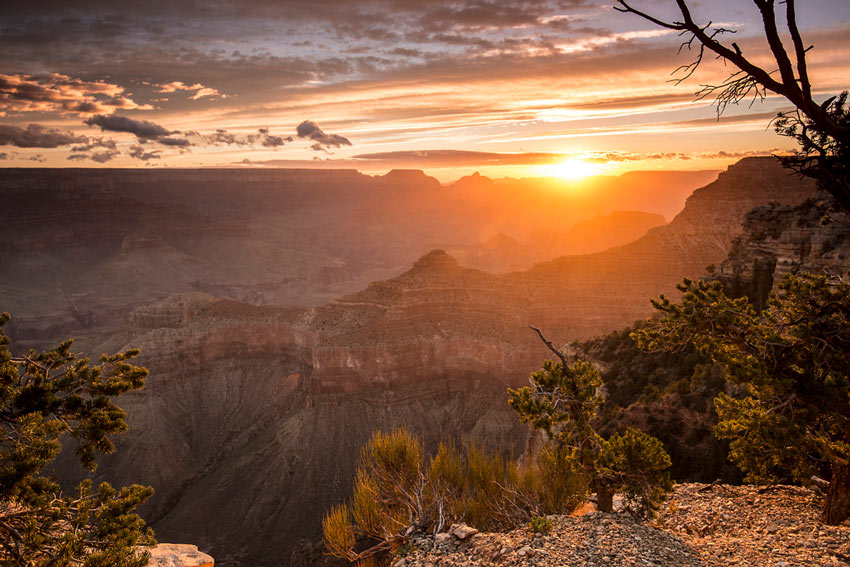National Park Service History
The Yellowstone Act passed the House and Senate quickly before moving on to receive the signature of President Grant on March 1, 1872. This was the first time in history that the Government had acted to conserve land in this manner. Previously, “conservation” applied only to raw materials such as coal and iron. Through this Act however, mountains, lakes, canyons, forests and other natural features were on track to being protected.
Many presidents worked to clear the path to create what is our National Park System today. President Theodore Roosevelt signed the Antiquities Act in 1906 as a way “to declare by public proclamation historic landmarks, historic and prehistoric structures, and other objects of historic or scientific interest” in America. In 1916, 44 years after the creation of Yellowstone National Park, President Woodrow Wilson created the National Park Service. In 1933, President Franklin D. Roosevelt consolidated national monuments and military sites to the National Park Service by signing Executive Order 6166.
Yellowstone National Park was the very first national park in America and today covers an area just over 3,000 square miles. Yellowstone is home to hundreds of species of wildlife including the endangered Gray Wolf and the oldest and largest public bison herd in the United States. These are just a couple examples at how conservation made it possible to view these amazing creatures in their natural habitat.
While I’ve been to foreign countries a number of times and always enjoy learning about their cultures and landmarks, the thing that gets to me is that there are so many places I’ve yet to explore in our own great country. My parents felt the same way, which is why they saved all year long to take us kids on summer road trips across America. I remember being young and getting to experience the vastness of the Grand Canyon and quiet giants of the Redwoods, among other natural landmarks. Something my dad said a long time ago has always stuck with me:
“Travel is fatal to prejudice, bigotry, and narrow-mindedness, and many of our people need it sorely on these accounts. Broad, wholesome, charitable views of men and things cannot be acquired by vegetating in one little corner of the earth all one’s lifetime.”
– Mark Twain
It’s important to travel and as I look back on our family trips, I truly appreciated the effort my parents took to show us something other than our small view of the world from our hometown. To give you an idea on the size of all national parks combined, the area covers 84,000,000 acres. That’s just under the total area of Germany. Imagine all that you’re missing out on! And for some, it may just be a few hours drive away from their front door.
Passport to Your National Parks
There are around 400 national park units and at least one in almost every state, but how do you find them? Something to keep in mind is that not every national park is a location as rugged and wild as Yellowstone. The list of national parks in the U.S. includes monuments, historical sites, recreation areas and other areas of interest. The best way to find a park near you is by using the Find A Park page on NPS.gov. Once you found a park to visit, I recommend picking up a National Parks Passport before you head out.
This Passport is similar to an international one but instead of recording country information, it’s a way for you to collect cancellations from parks you visit by way of a rubber stamp at park offices or ranger stations. The spiral bound 6 x 3 travelogue is printed in the USA and includes a free map. They also donate their profits to National Parks.
I’ve had one for a couple of years now but it remained lost until a recent move. I’ve since made sure to keep it handy in case I ever get the chance to visit a park I haven’t been to yet; I’m kicking myself for not bringing it to Yosemite Valley last year. While I wish I’d started earlier with my stamp “collection,” at least it’s something I can continue to work towards.
Digital Passport Alternative
While I prefer the rubber stamp and paper method, there are also National Park passport apps available for iOS and Android devices.
One last thing to note is that while only 133 parks charge an entrance fee, the National Park Service offers “Fee Free Days” throughout the year. There’s really no excuse not to get out there!
Oh, be sure to send us a postcard from wherever you wind up:
ITS Tactical
6100 W. Pioneer Pkwy. Suite 100
Arlington, TX 76013
Grand Canyon Title Photo © Contributor Jeff More
